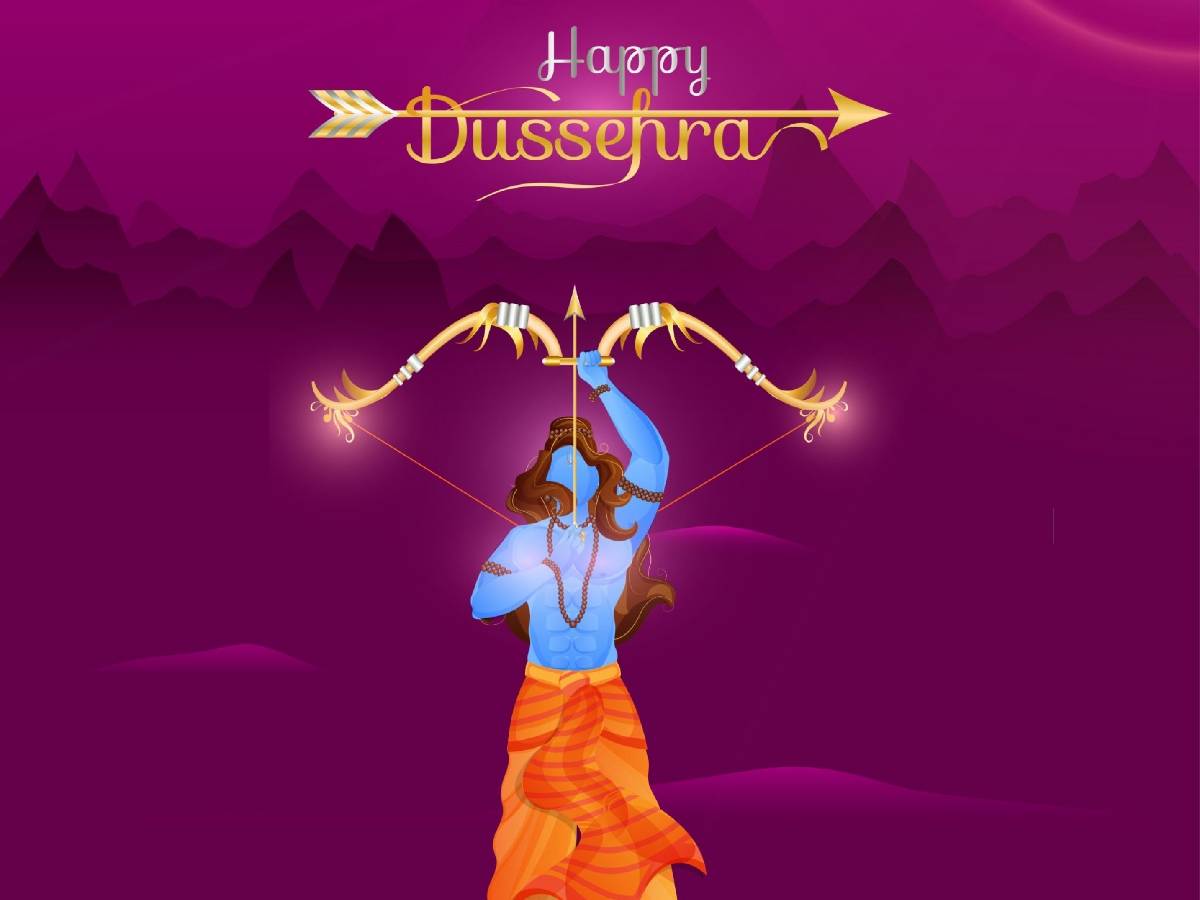Dussehra Festival in India: Significance, Traditions, and Celebrations

Dussehra Significance
Dussehra, a significant Hindu festival celebrated throughout India, ignites a contagious enthusiasm among its people. This festive extravaganza, also known as "Dashmi" due to its tenth-day observance, marks the culmination of a nine-day celebration known as Navratri. During Navratri, devout Hindus across the nation worship the nine forms of Devi/Shakti, the Hindu Goddess Durga, each with its unique rituals. Twenty days following Dussehra, India lights up with the festival of Deepavali, holding profound cultural importance. If you happen to visit India during the months of October and November, you'll be immersed in a cultural tapestry that showcases the essence of the country at its finest.
Dussehra/Vijayadasami, which falls on October 24, 2023, will be observed on a Tuesday
Why is Dussehra Festival celebrated?
Dussehra festival symbolizes the triumph of truth and love over evil and hatred, encapsulating a universal principle that kindles faith and fosters humanity across the globe. According to ancient mythology, the tale unfolds with Ravana, the embodiment of evil, kidnapping Goddess Sita and imprisoning her in his palace. During this period, Sita was separated from her husband, Lord Rama, who embarked on an arduous journey to reunite with his beloved wife.
Accompanied by his loyal brother, Lakshman, and the devoted Hanuman, Lord Rama charted a path across the vast Indian Ocean to reach Ravana's Lanka, a treacherous quest that ultimately led to the liberation of Sita. This event is commemorated as Dussehra, not merely confined to Hinduism, but resonating with the universal values of peace, love, togetherness, fearlessness, and purity. These values are reflected in the timeless story of the Ramayana, embraced by people of all faiths around the world.
Dussehra Celebrations in India
The atmosphere in the streets of India during the Dussehra festival becomes electric, marked by an infectious wave of enthusiasm and liveliness. Although primarily a Hindu celebration, Dussehra transcends religious boundaries, drawing followers from various faiths to join in the rejoicing of good prevailing over evil. Families and communities come together for joyous gatherings.
Dussehra is celebrated on Dashmi, the tenth day, concluding the nine-day Hindu festival dedicated to different incarnations of Devi (Goddess). Each of these days brims with the pure spirit of festivity. Over these ten days, carnivals and fairs spring up across the nation, bringing joy to both the young and the old.
These festivities feature an array of games, contests, and performances, with the legendary Ram Leela taking the spotlight, as mentioned earlier. Ram Leela, a theatrical musical, involves people, including children, dressing up as characters from the Ramayana, reenacting pivotal scenes. This nine-day-long spectacle culminates in the dramatic climax of Ravana's defeat on Dussehra.
A particularly striking tradition is the ritualistic burning of massive effigies on the day of the Dussehra festival. These effigies represent the demon king Ravana, along with his formidable brothers, Kumbhakarna and Meghnad. Stuffed with fireworks, they are meticulously crafted from bamboo, paper, cloth, and various materials. The spectacle of these effigies consumed by flames signifies the eradication of evil from society and the hearts of the people.
In the spirit of celebration, people of all ages come together with great enthusiasm and fervor to commemorate the victory of Lord Rama over the demon king Ravana. While Dussehra is observed throughout India, each region adds its unique touch to the celebration, emphasizing the theme of good conquering evil.
The ways in which Dussehra is celebrated in India include
Processions: Many parts of India hold grand processions, during which idols of deities such as Goddess Durga, Goddess Lakshmi, Goddess Saraswati, Lord Ganesh, and Kartik are carried to rivers for immersion. These processions are accompanied by music, dance, singing, and merrymaking.
Ram Leela: Across the country, people participate in Ram Leela performances, which bring the epic Ramayana to life. These musicals feature individuals, including children, dressed as various characters from the Ramayana, and the performances span nine days, concluding with the symbolic defeat of Ravana on Dussehra.
Ravan Dahan: On Dussehra, massive effigies representing the demon king Ravana, known for his ten heads, are set ablaze in various regions of India. These effigies, packed with crackers, are constructed using bamboo, paper, cloth, and other materials. The sight of Ravana and his brothers engulfed in flames signifies the removal of evil from society and the hearts of the people.
In addition to these celebrations, people burst crackers and host feasts with their loved ones. Delicacies such as jalebi, samosas, basundi, puran poli, sevaiyan, and more are prepared and relished across many Indian households. Furthermore, vibrant fairs and exhibitions are set up at various locations, adding to the festive vibes of the Dussehra festival in India.





